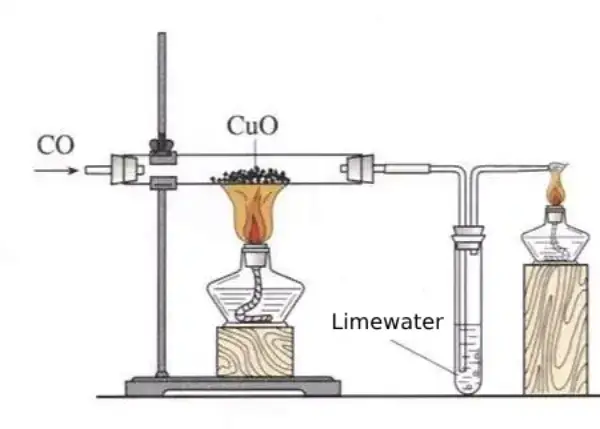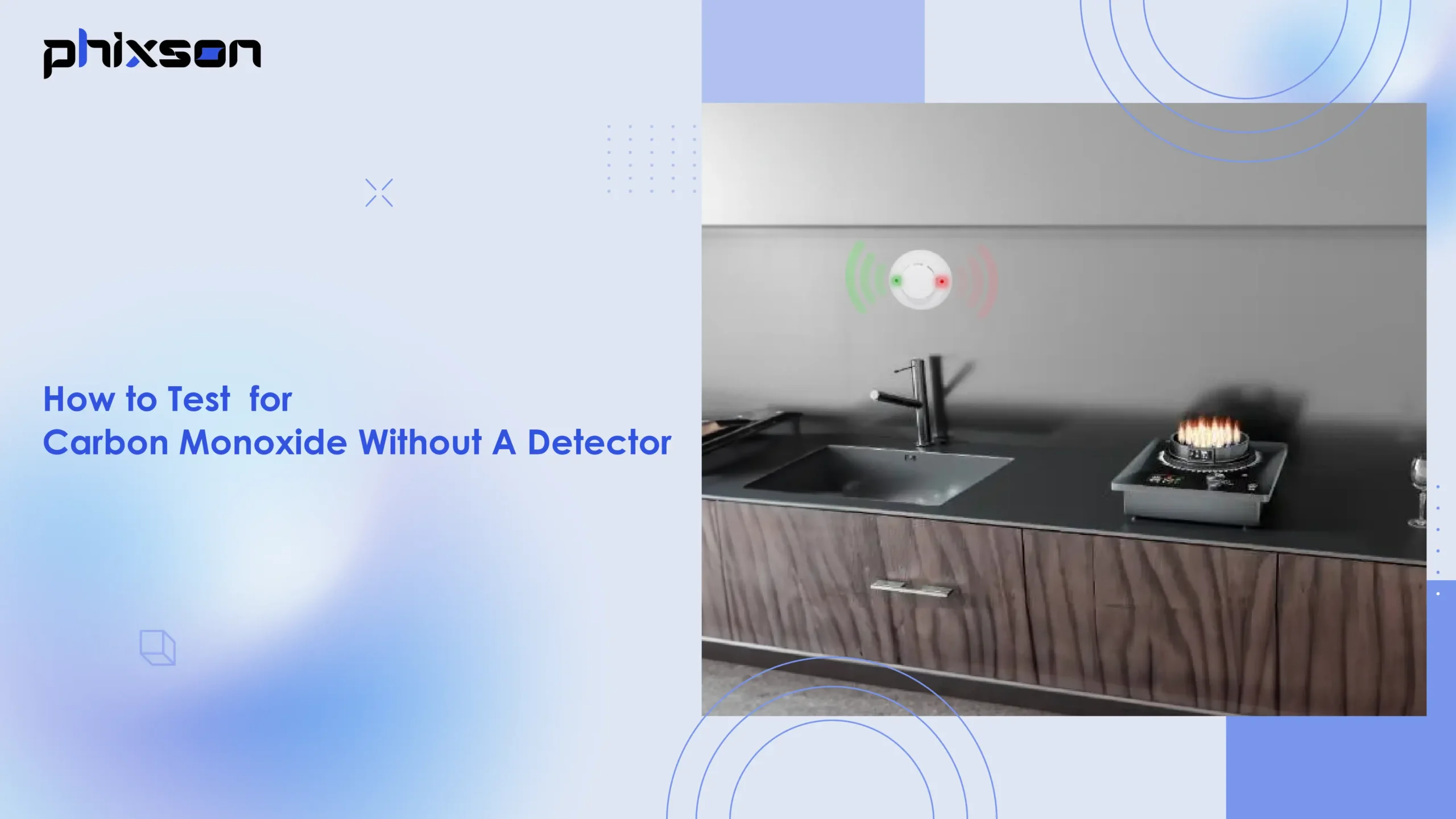Aucun d’entre nous n’aime un moyen simple et rapide de détecter la concentration de monoxyde de carbone à l’intérieur. Ce blog explorera comment tester le monoxyde de carbone sans détecteur.
Quelle est l’odeur du monoxyde de carbone?
Nous ne pouvons pas le sentir avec les sens humains. Parce que le monoxyde de carbone est totalement inodore, incolore, et sans goût, ce qui le rend extrêmement dangereux. Une inhalation excessive peut entraîner des maux de tête, faiblesse et même perte de conscience. D'après le CDC, environ 400 Des Américains meurent chaque année d’une intoxication involontaire au CO. Et à propos 50,000 des personnes se rendent aux urgences en raison d’une exposition accidentelle au CO. Ainsi, il est très nécessaire de surveiller attentivement la concentration de CO dans notre vie quotidienne, surtout dans nos maisons où nous restons la plupart du temps chaque jour.
Où tester les sources potentielles de monoxyde de carbone?
Cette première chose est de savoir où surveiller les sources potentielles de CO dans notre maison.
Sous-sol ou buanderie
Lorsque votre fournaise brûle du combustible comme le gaz naturel ou le mazout, il a besoin d’un équilibre parfait entre carburant et oxygène. Si ses brûleurs s'encrassent ou si son échangeur thermique se fissure, cet équilibre est perturbé. Il y aura donc une combustion incomplète et une production de CO.
Votre chaudière fonctionne de la même manière, mais il est axé sur le chauffage de l'eau. Lorsque du tartre s’accumule à l’intérieur ou que ses brûleurs se bouchent, la chaudière ne peut pas brûler du carburant efficacement. Cette combustion inefficace est comme un moteur de voiture qui tourne à plein régime – cela crée plus de CO qu'il ne le devrait.
Le conduit de fumée ne crée pas réellement de CO, mais c'est comme l'autoroute pour que les gaz d'échappement s'échappent. Quand ce tuyau développe des trous, se déconnecte, ou se corrode, ces gaz dangereux peuvent s'échapper dans votre espace de vie.
Enfin, votre cheminée sert de voie de sortie finale à ces gaz. Même s’il ne produit pas non plus de CO, une cheminée bouchée ou endommagée peut forcer le retour du monoxyde de carbone dans votre maison au lieu de le libérer en toute sécurité à l'extérieur..
Cuisine
Passage à la cuisine, notre cuisinière à gaz est un endroit clé à vérifier. Quand votre cuisinière à gaz fonctionne correctement, le gaz naturel se mélange à l'oxygène et brûle avec une flamme bleue vive. Cela crée un processus de combustion complet qui produit principalement du dioxyde de carbone et de la vapeur d'eau.
Cependant, Le CO peut se former lorsque ce processus de combustion se déroule mal de plusieurs manières. Si les brûleurs sont obstrués par des débris alimentaires ou de la graisse, ils ne peuvent pas mélanger correctement le gaz et l’oxygène. Cela conduit à une combustion incomplète et à une production de CO. En plus, si les orifices du brûleur sont mal alignés ou si la pression du gaz est mal réglée, cela peut créer un rapport carburant/air inapproprié, provoquant une combustion inefficace et une formation de CO, aussi.
Garage
D'abord, lorsque vous démarrez votre voiture pour la réchauffer ou la faire reculer, Du CO est produit. Même courir quelques minutes dans le garage peut créer des niveaux de CO dangereux, parce que le gaz s'accumule plus vite qu'il ne peut s'échapper.
Deuxième, lorsque vous utilisez des outils à essence, comme les tondeuses à gazon, dans le garage, il y aura du CO, aussi. Ces moteurs plus petits produisent également du CO. Sans ventilation adéquate, ces gaz dangereux restent emprisonnés à l’intérieur.
Quels sont les signes de monoxyde de carbone dans votre maison?
Signes physiques autour de votre maison
- Taches de suie ou jaune brunâtre autour des appareils électroménagers
- Des veilleuses qui explosent fréquemment
- Flammes jaunes ou oranges sur les appareils à gaz (devrait être bleu)
- Humidité excessive sur les fenêtres et les surfaces froides
- Une brume semblable à du smog à l’intérieur de votre maison
- Pas de tirage vers le haut dans la cheminée
- Suie tombée dans les cheminées
Comportement des plantes/animaux de compagnie
- Les plantes d'intérieur meurent de façon inattendue
- Animaux paresseux ou malades
Comment tester le monoxyde de carbone sans détecteur
En plus de la méthode d'observation simple ci-dessus, nous pouvons appliquer de l'oxyde de cuivre chauffé pour identifier le CO.
Oxyde de cuivre chauffé

La première méthode nécessite de l'oxyde de cuivre chauffé. Le principe de cette méthode repose sur les propriétés réductrices du monoxyde de carbone., ce qui peut réduire l'oxyde de cuivre chauffé (CuO). Lors de cet essai, le gaz passe à travers de l'oxyde de cuivre chauffé puis dans de l'eau de chaux claire. Si l'oxyde de cuivre passe du noir au rouge, et le clair eau de chaux devient nuageux. Cela indique la présence de monoxyde de carbone dans l'échantillon de gaz. Les outils et matériels d'expérimentation sont répertoriés comme suit.
- Bouteille de récupération de gaz est conçu pour stocker et fournir du monoxyde de carbone. En raison de la toxicité du CO, nous vous recommandons d'utiliser des bouteilles spécialement fabriquées avec d'excellentes propriétés d'étanchéité.
- Tube de verre retient l'oxyde de cuivre chauffé et permet le passage du gaz. Le tube à essai ou le tube en verre doit être suffisamment long pour observer clairement les changements de couleur de l'oxyde de cuivre..
- Bouteille de lavage de gaz purifie ou sèche le gaz avant qu'il n'entre dans l'appareil de détection pour garantir des résultats expérimentaux précis.
- Lampe à alcool chauffe l'oxyde de cuivre jusqu'à ce qu'il atteigne l'incandescence.
- Support en fer supporte les tubes à essai, tubes de verre, et autres équipements expérimentaux.
- Tubes de raccordement en verre relier diverses pièces d’équipement pour assurer un flux de gaz fluide dans tout le système.
- Tube en caoutchouc fonctionne en conjonction avec des tubes de verre. Il offre une plus grande flexibilité et de meilleures propriétés d’étanchéité.
- Bouchon en caoutchouc monotrou scelle une extrémité du tube à essai ou du tube en verre tout en permettant au gaz de passer à travers des conduits spécifiques.
- Tube de verre conique dirige le gaz vers des endroits spécifiques dans le tube de verre pour un contrôle expérimental plus précis.
- Poudre d'oxyde de cuivre apparaît comme un solide noir.
- Eau de chaux claire détecte le dioxyde de carbone produit par la combustion du monoxyde de carbone, prouvant indirectement la présence du CO.
- Des allumettes ou un briquet sont utilisés pour enflammer le gaz.
Ccombustion Test
La deuxième méthode est le test de combustion. Cette méthode fonctionne car le monoxyde de carbone est combustible et produit du dioxyde de carbone lorsqu'il est brûlé..
Pour effectuer ce test, le gaz doit être allumé avant de placer un bécher frais et sec sur la flamme. Après que le bécher soit rapidement inversé, on y ajoute de l'eau de chaux claire. Si de la vapeur d’eau apparaît sur la paroi intérieure du bécher et que l’eau de chaux claire devient trouble, cela suggère la présence de monoxyde de carbone. Cependant, il est important de noter que cette méthode n’est pas le test le plus spécifique, car d'autres gaz combustibles pourraient produire des résultats similaires. Nous ne recommandons donc pas vraiment cette approche.
Remarques
Il s'agit de méthodes de laboratoire destinées uniquement à des expériences contrôlées et ne doivent jamais être tentées à la maison pour des tests de sécurité. De toute façon, la méthode d'observation des signes est plus recommandable que l'expérience en chimie car elle est simple et rentable.
Mon téléphone peut-il détecter le monoxyde de carbone?
Non, les smartphones standards ne peuvent pas détecter le monoxyde de carbone. Ces applications de détection de monoxyde de carbone apparaissent sur la boutique d'applications de votre téléphone. Même s'ils semblent prometteurs, voici la vraie histoire.
Ces applications proposent simplement des données sur la concentration de CO qui sont envoyées depuis votre détecteur de CO IoT connecté.. Certaines applications font des déclarations audacieuses sur la détection du CO à l'aide des capteurs intégrés de votre téléphone., mais c'est trompeur et potentiellement dangereux. Ils pourraient essayer d'utiliser d'autres capteurs de votre téléphone, comme des capteurs de pression atmosphérique ou de température, mais aucun d'entre eux ne peut réellement détecter les molécules de monoxyde de carbone.
Un moyen simple d’éviter une concentration élevée de CO à l’intérieur
- Nettoyez la cheminée de votre foyer
- Installer des ventilateurs de garage
- Directives d’utilisation appropriée du poêle
- Installer des détecteurs de CO
Quel est le moyen le plus rapide de tester le monoxyde de carbone?
Le moyen le plus rapide de tester le monoxyde de carbone consiste à utiliser dispositif de capteur intelligents. Si vous êtes sensible à son coût et à sa commodité, nous vous recommandons fortement le type WiFi à ionisation.
